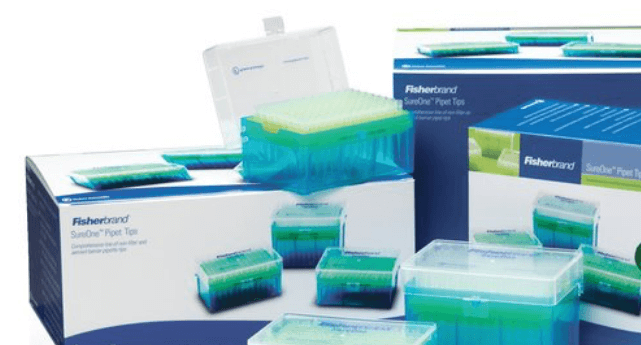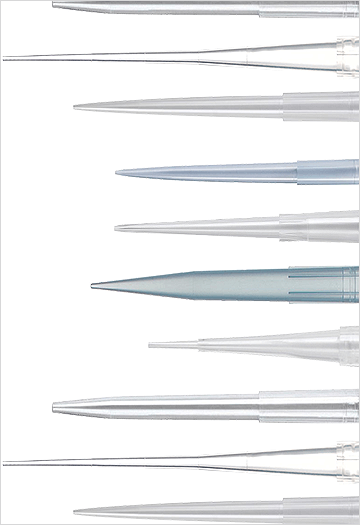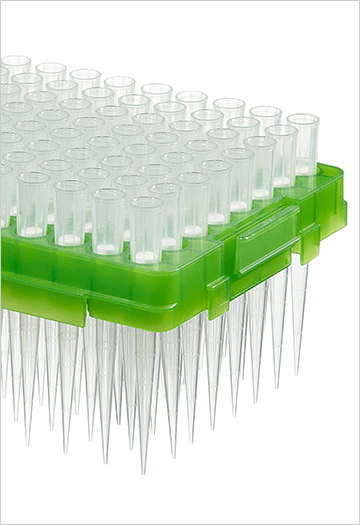How to Choose the Right Pipette Tips for Your Application
Your Guide to Tip Selection Based on Quality and Performance

When your lab work calls for you to measure or transfer small volumes of liquid, accuracy and precision are critical. Not only do you need to be well versed in the proper techniques for using handheld air- or positive-displacement pipettes, the pipettes and pipette tips must meet your requirements for quality and performance.
There are many factors to consider when selecting the right pipette tips for your application including material, size, sterility, and filter varieties. Learn more about these options so you’ll be able to choose the right tools at the right price to help you achieve results.
Consider Material, Quality, and Sterility

What Material Is Used to Make Pipette Tips?
Most pipette tips are made from a polypropylene resin. However, they may contain polymerization agents, chemicals added to help release the plastic tips from their injection molds, or metals from coloring agents or dyes. If you choose to use colored tips (usually yellow or blue), choose metal- or cadmium-free versions.
Beware of other biological or chemical contaminants that may be introduced during manufacturing. These impurities can leach extractables, metals, and other contaminants into samples. This can be further exacerbated when the tips are used with certain buffers, salts, acids, bases, or organic chemicals.
Although the polymers used to make tips are naturally hydrophobic, some coatings or other treatments can help to further decrease sample adhesion. These “low-retention” tips can help minimize sample binding and ensure that none of the sample remains in the tip.
Why Is Pipette Tip Quality Important?
For accurate, reproducible liquid transfers, determine the molding quality, physical integrity, and uniformity of your pipette tips.
The tip material should be clear enough to easily see the aspirated sample. It must also be flexible enough to fit securely on and be ejected from the pipette barrel without the need for excessive force. Ergonomically designed tips that require less force can help to reduce the likelihood of repetitive stress injuries (RSIs).
Sterility and Purity of Pipette Tips
Many pipette tips are pre-sterilized by the manufacturer and packaged to retain that sterility until use. Others can be sterilized by the user. Check the manufacturers’ instructions for autoclaving pipette tips.
Choose pipette tips that are certified free of endotoxins, DNA, DNase, RNase, or PCR inhibitor based on your application and needs. Some more sensitive reactions, like polymerase chain reaction (PCR), yield poor results in the presence of contaminants like bile salts, urea, and calcium ions.
Standards for Fit, Size, and Shape

Pipette and Tip Design and Fit
Many manufacturers design their pipette tips so that they work best when used with the pipettes they make. In fact, ISO standard 8655-2 recommends that customers use pipettes and tips from the same manufacturer. If you choose to use a different brand of pipette and tip, recalibration will most likely be needed.
No industry standards exist for dimensions of pipette nose cones or tips, but “universal” tips can typically be used successfully with a variety of pipette types and brands.
Pipette Tip Sizes and Shapes
Standard pipette tips are multipurpose and available in a choice of capacities. Most pipette tips can accommodate a range of liquid volumes, typically 0 to 20µL, 20 to 200µL, or 200 to 1000µL.
Choose a pipette tip size based on the transfer capacity of the pipette with which it will be used and the amount of liquid being transferred. A large-capacity pipette and tip would not effectively transfer minute sample volumes.
Special pipette tip shapes include:
- Extended-length tips can help when sampling from deep or narrow containers
- Wide-orifice tips have larger sample openings to accommodate more viscous samples or when the sample contains many particulates
- Gel-loading tips are tapered to specifically place the sample on electrophoresis gels
- Graduated tips have measurement marks for quick reference
Filter Options, Plus Application and Packaging Guides

Pipette Tip Filters and Barriers
It is important to consider your need for pipette tips with filters and barrier because the process of pipetting can create aerosols in the air space between the sample and the nose cone of the pipette barrel. These aerosols can enter or contaminate the pipette and may be carried over to subsequent samples.
Pipette filter tips include a plug of material that allows air to pass through, but prevents any droplets, DNA, or particles from contaminating the pipette. Some filters allow the sample to be drawn above the barrier, while other filters effectively seal or obstruct liquid from passing the barrier.
Although pipette filter and barrier tips may cost a little more, their use can save you the cost of reagents, time, and the labor associated with repeating work or repairing or replacing pipettes that have been compromised.
Application Guide
- General/routine procedures: Use standard, universal fit, or pipette-specific tips
- Electrophoresis: Choose flat gel-loading tips (for polyacrylamide gels), round gel-loading tips (for agarose gels), or gel-cutting tips
- Viscous/hard-to-pipette substances: Use wide-orifice tips for macromolecules (genomic DNA) or fragile samples (macrophages, hybridomas, hepatocytes)
- Deep/narrow containers: Use extended-length tips
- Potential for aerosols or cross-contamination: Choose standard filter or self-sealing barrier tips for genetic studies, PCR, molecular biology, forensics, and radioisotope handling
- Combinatorial chemistry: Carbon-filtered tips are preferred for handling strong acids and bases or aggressive organic solvents
- Small samples: Low-retention tips can help with limited sample sizes or when using expensive reagents
- Visual checking: Graduated tips let you make a quick volume or measurement assessment
- Strict aseptic conditions: Use individually wrapped tips, available in multiple sizes and shapes
Packaging Formats
- Bulk: If your application does not require sterility and the results are not likely to be significantly affected by low-level contamination, you may purchase tips in bags of as many as 1,000 tips.
- Racked: Most pipette tips are sold in racks that hold the tips vertically to allow the pipette barrel to be easily inserted into the proximal and larger diameter tip opening. The bottom of the rack is “closed” to protect the end that will enter the liquid or sample. The rack usually also has a hinged cover to completely enclose the pipette tips when they are not being used.
- Reload: In this configuration (sometimes called “refill”), the racks are designed to accommodate a replaceable tray of pipette tips. When new tips are needed, the empty tray is discarded and replaced with a full tray. Since the rack can be reused many times, this format produces less plastic waste and is therefore more environmentally friendly.
- Individually wrapped: Used for applications that require strict or aseptic conditions, each tip is separately packaged to maintain sterility until the exact moment of use.


